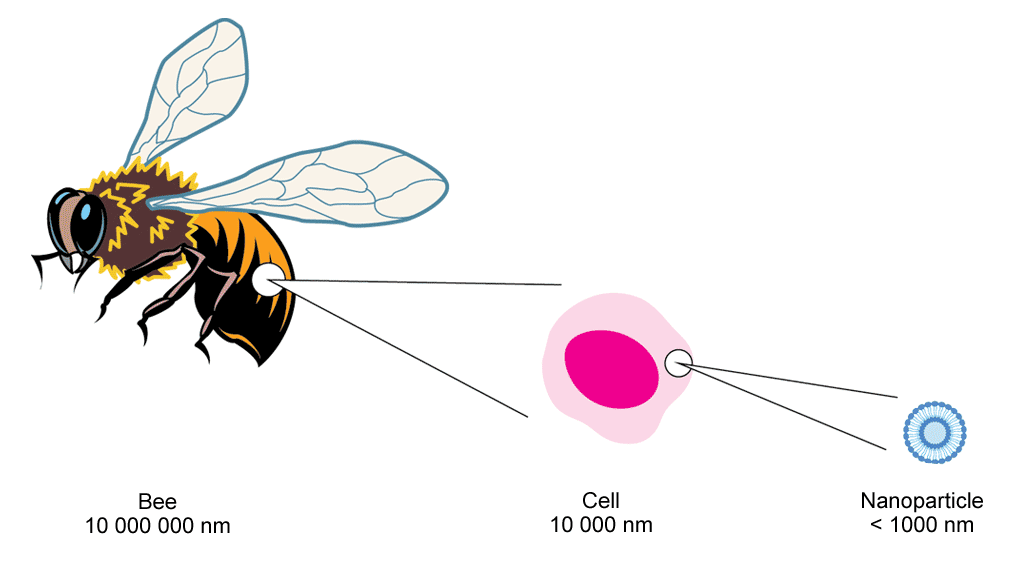Nanoparticles
Nanoparticles are tiny objects, such as crystals or ultra-fine powders. Nanoparticle medicines are most commonly used to help medicines reach cells and tissues that could not otherwise be reached. Due to their small size, nanoparticles work by travelling easily through the body and moving into tiny spaces between blood vessels and into their target tissues.
Nanoparticles can also help to protect medicines that are easily broken down by the body. By binding these medicines to solid particles (such as gold) or encapsulating them in liposomes (fats), nanoparticles help these medicines to reach their target tissue. Using bio-compatible materials, such as liposomes and albumin, nanoparticles can reduce the side effects associated with some chemical medicine delivery systems, for example in some cancer treatments (chemotherapy).
They can also control the targeted release of medicines at specific sites in the body and thereby increase efficiency and reduce side effects. They are also used in medical imaging such as X-rays.
Nanoparticles are only available as intravenous formulations, which means that they must be injected into the blood stream.
In the EU, nanotechnology has received considerable investment and is the focus of social and ethical debate.
#mla_gallery-1 { margin: auto; width: 100%; } #mla_gallery-1 .gallery-item { float: none; margin: 1.5%; display: inline-block; text-align: center; width: 97%; } #mla_gallery-1 .gallery-item .gallery-icon img { border: 2px solid #cfcfcf; } #mla_gallery-1 .gallery-caption { margin-left: 0; vertical-align: top; } /* see mla_gallery_shortcode() in media-library-assistant/includes/class-mla-shortcode-support.php */
- Nanoparticles are extremely small and cannot be seen by the naked eye.
Further resources
- Mandal, A. (2014, October 8). What are nanoparticles? Retrieved 22 June, 2015, from http://www.news-medical.net/health/What-are-Nanoparticles.aspx
- European Medicines Agency (2013). Innovative products: Nanotechnology. Retrieved 19 March, 2024, from https://www.ema.europa.eu/en/innovative-products
- Nano & Me – Nanotechnology in our lives (n.d). Social and ethical issues. Retrieved 8 July, 2021, from https://web.archive.org/web/20170430014745/http://www.nanoandme.org/social-and-ethical/
A2-1.06.8-V1.2
